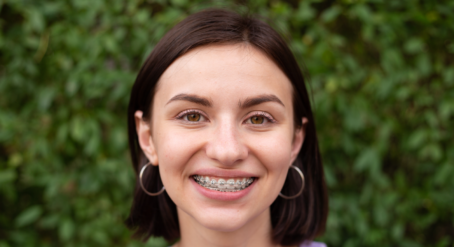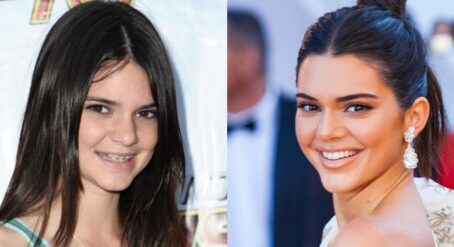When it comes to your child, ensuring they have good dental health early in life will help them have good oral health as adults. The early years are also a great opportunity to teach your children healthy dental habits that will continue well into their adulthood. Understanding the different dental milestones your child will experience also plays a role in their long-term dental health. So that’s why we’re going to explore the different dental milestones your child will go through so you can put your child on a journey towards a perfect smile.
How many teeth does a child have?
There are 20 baby or deciduous teeth in total – 10 on the top and 10 on the bottom. The baby teeth are temporary, acting as a placeholder for the adult teeth. All 20 of your child’s baby teeth will fall out by the time they enter their early teens. The baby teeth will generally be replaced in a similar pattern to how they erupt, that is the lower front teeth (incisors) will be replaced first, and the back molars will be replaced last. Losing baby teeth tends to happen in pairs – so if your child’s left front tooth comes out, then in a few weeks or months their right front tooth will become loose and eventually fall out.
As your child’s teeth fall out, adult teeth will replace it. But did you know that 32 adult teeth will grow back instead of 20? Some children have a full set of adult teeth when they start their teens and others will have baby teeth when they are in their late teens.
What are the different dental milestones for your child?
Your baby starts teething
Most babies can start teething as early as 3 months or as late as 12 months. Every baby has a different growth rate and dental age and this is reflected in how quickly or slowly they start teething. Usually, the baby’s front bottom teeth will be the first to show so that they have a way to chew or break down foods.
Some of the signs that your baby has started teething include:
- drooling or dribbling
- red and swollen gums
- flushed cheeks or a slight fever
- sucking on their fingers, fists or other smooth objects
- being cranky and restless.
There are many of ways you can make your baby feel more comfortable and soothed during this process, such as:
- gently rubbing your baby’s gums (after washing your hands) or running a cold, clean face washer on their gums
- giving your baby a cold (not frozen) teething ring to suck on
- feeding them soft foods.
In general, your child should have a full set of baby teeth by the age of 3. At this age, you should also be keeping an eye out on other teeth or jaw issues that they might have, such as overcrowded teeth or a teeth that cannot meet (malocclusion).
Baby teeth come out, adult teeth come in
As your child starts growing up, their baby teeth will begin to come loose and fall out throughout their early years. This stage will typically happen when your child is around 6 years old and will continue until they enter their early teens. When it comes to baby teeth falling out, it can happen naturally or because of an impact in sports or on the playground.
The adult tooth should grow to replace a baby tooth. However, there are some cases where the baby tooth isn’t ready to come out and the adult tooth will grow behind the baby tooth. Some people refer to this appearance as ‘shark teeth’.
While shark teeth might seem like something to worry about, it’s actually more common than you think. And depending on the nature of the baby tooth that’s blocking the adult one, there is a simple solution. Get your child to wiggle their baby tooth – if it’s loose, then your child can gently loosen the tooth a little bit each day until it comes out. If it’s solid, then contact your local orthodontist to get their opinion on whether it’s worth extracting the tooth or letting it fall out naturally.
Time to see an orthodontist
When it comes to seeing an orthodontist for any complex teeth or jaw alignment issues, the recommended age for seeing an orthodontist and beginning treatment is 7–10 years old. But this is just a recommendation – your child might have to see an orthodontist earlier in their childhood or later in their teens.
No matter how soon or late you take your child to the orthodontist, your orthodontist can identify what problems your child might have and how best to treat them, whether that’s with braces or even orthodontic headgear. By seeing an orthodontist early in your child’s life, you can help them have straight teeth and a confidence boost throughout school and well into adulthood.
Wisdom teeth come out
As your child finishes their teenage years there’s a chance that their wisdom teeth might come through after all their adult teeth have settled in. When your child is older, there’s a possibility that their wisdom teeth need to be removed by the general dentist or Oral and Maxillofacial Surgeon as they tend to grow at irregular angles and can harm other teeth.
However, there are some rare instances where younger children and pre-teens can have their wisdom teeth come through. If this is the case, then your orthodontist may suggest tooth extraction to prevent complications.
Find a local orthodontist near you
Seeing an orthodontist throughout your child’s growth is the best way to identify if there are any issues with their tooth or jaw development. And as every child is different, an orthodontist is the best person to develop a custom treatment plan that will meet your child’s needs.
If you’re ready to start your child’s orthodontic journey, then you can use our Finder Tool to search for your local orthodontist and request a consultation.











